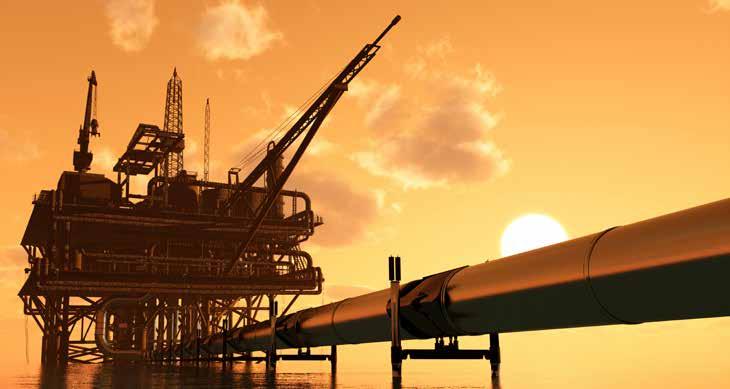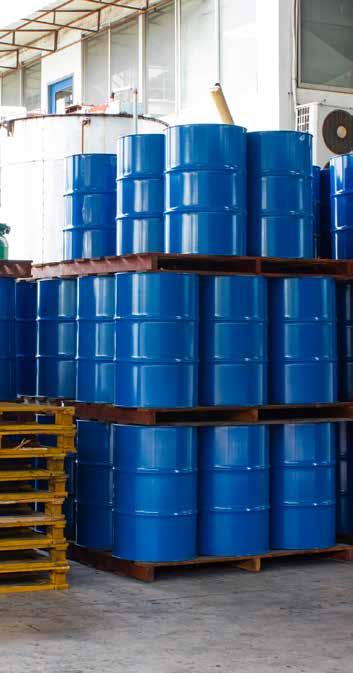
3 minute read
1.1 HISTORICAL BACKGROUND
Egypt is one of the largest oil producers in Africa outside the Organization of Petroleum Exporting Countries (OPEC); in addition, it has the largest oil refining capacity in the continent. Moreover, Egypt has joined the Organization of Arab Petroleum Exporting Countries (OAPEC) in 1973.
Egypt’s petroleum industry has its roots as far back as Pharaonic times. In 1835, the first surface geological investigations were made in Egypt by a French Naval officer. In 1868, Egypt first started its petroleum activities when some petroleum nominations appeared in Gemsa.
Advertisement
The first drilling in the field took place in 1910 then developed by Anglo Egyptian Oil fields (AEO), a joint venture formed between British Petroleum (BP) and Shell formed. Since the discovery of the field, 23 fields in this region were discovered; producing 270 thousand tons (mt). Gemsa then became a mature field and stopped producing crude oil in 1927.
In 1917, Egypt’s total crude oil production reached nearly one million barrel per year (mmb/y) from Hurghada field then it reached two mmb/y in 1930 until Ras Ghareb field was discovered in 1938. After this discovery, in the 40s, crude oil annual average production recorded between 8 and 9 mmb/y. In 1951, Egypt’s crude oil production reached 28 mmb/y. The production hike was mainly due to discovering Ras Gharib field. It is worth noting that Egypt became a net exporter of crude oil in 1976 for the first time.
In Fiscal Year (FY) 1993/94, the consumption of petroleum products increased from about 54 million barrel (mmb) recording 168.5 mmb in FY 1998/99 and crude oil exports decreased, in FY 1993/94, from 70 mmb reaching 21 mmb in FY 1998/99.
Crude oil and condensates production recorded 243,11 mmb in FY 2012/13 and increased to reach 246.34 mmb in FY 2014/15 where the Western Desert is considered the largest crude oil and condensate production area.
For natural gas, exploration started in the Mediterranean, Nile Delta and Western Desert in the early 60s. Onshore Abu Madi field was the first natural gas field discovered in 1967 by Eni in the Nile Delta, which was followed by the discovery of offshore Abu Qir gas field in the Mediterranean Sea in 1969.
In 1997, The West Delta discoveries by British Gas (BG) drilled 17 successful wells. This remarked a new phase of huge natural gas discoveries and a boom in production as well.
Between 1980 and 2000, many natural gas fields were discovered in the Western, the Mediterranean and Nile Delta areas.
In 2000, MoP succeeded in its negotiations with Foreign Partners to set a ceiling and a floor for the gas prices, this amendment in the gas pricing was a cornerstone for enabling the export of natural gas. The export of gas began in July 2003 to Jordan, through the first phase of the Arab gas pipeline which extends to Lebanon via Syria, Turkey, and Spain. In 2005, Liquefied Natural Gas (LNG) was first exported from the liquefaction plants established on the Mediterranean Sea.
Three of the giant fields were discovered recently as well to highly contribute to the gas production volume namely: Zohr, Nooros and Atoll fields.
Zohr field was discovered by ENI in August 2015. It is located in the Mediterranean Sea 190 Kilometers (km) north of Port Said. ENI holds 50% of the development, 30% belongs to Rosneft, 10% for Mubadala Petroleum and BP owns 10%.
Nooros field was discovered in July 2015. Production started in September of the same year. It is located in the Nile Delta and developed by Eni. The gas produced by the seven wells currently operational is sent to Abu Madi to be treated and then added to the national grid.
Atoll field is a significant discovery lying in North Damietta in East Nile Delta. This field was discovered by BP in March 2015 and was licensed by BP in collaboration with Egyptian Natural Gas Holding Company (EGAS) on 20 June 2016. Initial production reached 300 million standard cubic feet per day (mmscf/d) of natural gas and 9,000 barrel per day (b/d) of condensates in 2017.










